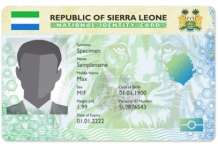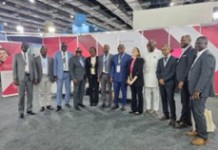By Foday Moriba Conteh
In August 2018, the government launched its flagship Free Quality School Education (FQSE) programme allowing every child to attend Government and Government-assisted schools tuition-free to families. Since its introduction, the Government’s combined spending on national examinations (NPSE, BECE, and WASSCE) and tuition has increased by over 400 percent (4X).
The FQSE programme has resulted in a tremendous increase in student enrolment nationwide. The number of learners enrolled in schools increased by almost 700,000 due mainly to the commencement of the FQSE.
The education sector data also reveal a significant increase in the number of schools approved for Government support. 53.4% of pre-primary, 78.7% of primary, 76.7% of junior secondary, and 80.4% of senior secondary schools are now approved- meaning they can receive tuition subsidies, textbooks, and other learning interventions. In 2018, less than half of the schools across basic and senior secondary were approved to receive Government support.
The Gross Enrolment Rate (GER) in the primary has increased by 30 and 34 percentage points for boys and girls respectively between 2018 and 2019.
The 2019 school census revealed that schools in Sierra Leone are serviced by a total of 83,054 teachers, 66,501 (83.7%) of whom practice in approved schools.
The recent 30 percent increase in teachers’ salaries means that the payroll for teachers has now increased by Le 13.45 billion, from Le 42.95 billion in March 2020 to Le 56.40 billion in April 2020. Data at the Ministry of Finance show that the annual teacher’s wage bill has now increased from Le 474.16 billion in 2019, to 636.62 billion for 2020; this includes additional costs of up to 4000 new teachers that were recently brought on the payroll. A new set of 1,000 teachers have been recruited for 2021 further expanding the teaching wage bill.
With the advent of FQSE, more schools have applied for approval to receive financial assistance from the Government of Sierra Leone and, in the process, to benefit from school subsidies. Total Pre-Primary, Primary, Junior Secondary, and Senior Secondary school subsidies in 2018 were Le 30,436,730,000. In 2021, this increased to Le 158,289,410,000.
For the first time, in 2018, pre-primary and senior secondary started receiving subsidies from the government. With pre-primary receiving Le 28,430,000 in 2018 which increased to Le 2,658,190,000 in 2021, and senior secondary receiving Le 8,912,700,000 billion in 2018 rising to Le 119,169,555,000 in 2021.
“The support we’ve got for education in the last couple of years is unprecedented. We have large government commitments, have the largest multi-donor trust fund ever at USD 72million with five major development partners, and now see some private sector contributions as well. Recently, we became eligible for up to $40m GPE transformation grant because of the work we have done,” Minister of Basic and Senior Secondary Education Dr. David Moinina Sengeh said.






